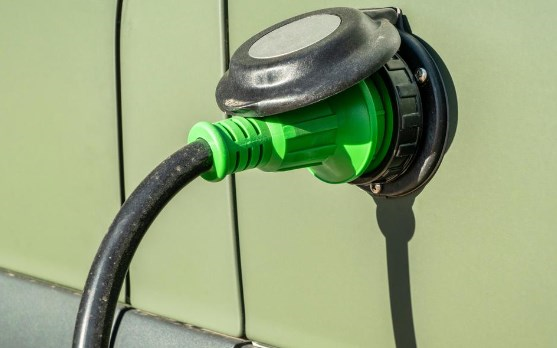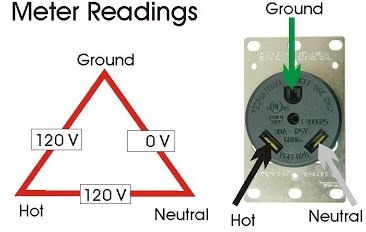Ready to connect your RV to campsite power and unlock a world of creature comforts? Let's break down the steps you need to follow for safe and successful wiring of a 30-amp RV plug.
The Functions Of A 30-Amp RV Plug

A 30-amp RV plug, also known as a TT-30 plug (Travel Trailer 30), serves several important functions in the context of recreational vehicles (RVs) and campers. Here are the key functions of a 30-amp RV plug:
-
Power Supply: The primary function of a 30-amp RV plug is to supply electrical power to the RV or camper. It provides a reliable connection to a power source, such as a campground pedestal or RV hook-up, allowing the vehicle to access electricity for various onboard systems and appliances.
-
Operating Appliances: The 30-amp plug enables the RV to run essential appliances and systems within the vehicle. This includes powering lighting fixtures, air conditioning units, refrigerators, microwaves, TVs, and other electrical devices commonly found in RVs.
-
Charging Batteries: RVs often have auxiliary batteries that need to be charged regularly to power onboard electronics and systems. The 30-amp RV plug facilitates charging these batteries when the vehicle is connected to a power source, providing a continuous supply of electricity.
-
Heating and Cooling: The 30-amp plug allows RV owners to run heating and cooling systems within the vehicle to maintain a comfortable interior temperature. This is particularly important during hot summer months or cold winter seasons when temperature control is essential.
-
Water Systems: RVs equipped with water heaters, water pumps, and other water-related systems rely on the 30-amp plug for power to operate efficiently. This ensures access to hot water for bathing, washing dishes, and other water-related activities while camping or traveling.
-
Entertainment Systems: The 30-amp RV plug powers onboard entertainment systems, such as TVs, radios, speakers, and electronic devices, providing occupants with entertainment options during their travels.
-
Lighting and Safety: The plug powers interior and exterior lighting in the RV, ensuring visibility and safety during nighttime activities. Proper lighting is critical for navigating the vehicle, campsites, and surrounding areas after dark.
-
Refrigeration: With the 30-amp RV plug, travelers can keep their refrigerators running efficiently, preserving food and beverages during their trips and ensuring they have access to fresh items.
In summary, the 30-amp RV plug plays a vital role in supplying power to an RV or camper, enabling the operation of essential appliances, systems, and devices that contribute to a comfortable, convenient, and safe RV experience for travelers and campers.

How To Wire A 30-Amp RV Plug
Wiring a 30-amp RV plug requires careful attention to detail to ensure a safe and secure electrical connection for your recreational vehicle. Here is a general guide on how to wire a 30-amp RV plug:
Note: It’s highly recommended to consult a qualified electrician or a professional with experience in electrical work if you are not confident in your wiring abilities. Safety is paramount when working with electricity.
Materials and Tools Needed:
- 30-amp RV plug
- Electrical wires (AWG 10 gauge)
- Wire strippers
- Screwdriver
- Electrical tape
- Wire nuts
Steps:
-
Shut Off Power: Before starting any electrical work, ensure that the power source is turned off to prevent accidents or electrical shocks.
-
Select the Right Wire: Use 10-gauge wire for the wiring. This is the common size of wire used for 30-amp RV plugs.
-
Prepare the Wires:
- Strip about 1.5 inches of insulation from the ends of the wires that you will be connecting to the plug.
- Typically, you will need to connect three wires: a white neutral wire, a green ground wire, and a black hot wire.
-
Connect the Wires:
- The 30-amp RV plug will have three screws labeled: "H" for hot (black wire), "N" for neutral (white wire), and "G" for ground (green wire).
- Connect the black (hot) wire to the "H" terminal, the white (neutral) wire to the "N" terminal, and the green (ground) wire to the "G" terminal.
- Ensure that the wires are securely fastened and that there is no stray wire sticking out of the terminals.
-
Secure the Connections:
- After connecting the wires, tighten the terminal screws to ensure a secure connection.
- Consider using wire nuts to secure the wire connections before attaching them to the plug for extra safety.
-
Secure the Plug:
- Once the wires are securely connected, carefully insert them into the corresponding terminals on the RV plug.
- Tighten the screws on the plug to secure the wires in place.
-
Inspect the Connections:
- Double-check all connections to ensure they are tight and secure.
- Use electrical tape to wrap around the base of the wires for added insulation and protection.
-
Test the Connection:
- After completing the wiring, turn on the power source and test the RV plug to ensure that it is functioning correctly.
- Use a multimeter to verify that the connections are correct and that there are no shorts or issues.
By following these steps carefully and adhering to safety precautions, you can wire a 30-amp RV plug effectively, providing a reliable and safe power source for your recreational vehicle. Remember, if you are unsure about any step in the wiring process, it is always best to seek assistance from a qualified professional.

Common Mistakes To Avoid During The Wiring Process
When wiring a 30-amp RV plug or any electrical connection, it is important to be mindful of common mistakes to avoid potential hazards and ensure a safe and reliable electrical installation. Here are some common mistakes to avoid during the wiring process:
-
Incorrect Wire Size: Using the wrong wire size can lead to overheating, which can pose a fire hazard. Ensure you use the correct gauge wire suitable for the amperage of the circuit.
-
Loose Connections: Loose connections can cause overheating and may lead to arcing or electrical fires. Always ensure that all wire connections are tight and secure.
-
Incorrect Terminal Connections: Plugging wires into the wrong terminals can cause electrical issues. Double-check that the wires are connected to the correct terminals (hot to hot, neutral to neutral, ground to ground).
-
Exposed Wires: Exposed wires can cause short circuits and electrical shocks. Use proper insulation and electrical tape to cover exposed conductors.
-
Mixing Up Neutral and Ground Wires: It's crucial to properly identify and connect the neutral and ground wires. Mixing up these wires can lead to electrical hazards and pose safety risks.
-
Overloading the Circuit: Ensure that the circuit and plug rating match the electrical requirements of your RV. Overloading the circuit can lead to tripped breakers, overheating, and potential fire hazards.
-
Skipping Safety Precautions: Always turn off the power before starting any electrical work. Additionally, use appropriate personal protective equipment and follow safety guidelines to prevent accidents.
-
Improper Stripping of Wires: Make sure to strip the wires to the correct length without damaging the conductors. Improperly stripped wires can lead to poor connections and electrical issues.
-
Improper Grounding: Ensure that the ground wire is properly connected to the ground terminal. Proper grounding is essential for safety and helps protect against electrical faults.
-
Not Testing the Connection: After wiring, always test the connection to ensure it is functioning correctly. Use a multimeter to check for proper voltage and continuity.
By being aware of these common mistakes and taking the necessary precautions, you can avoid potential electrical hazards and ensure a safe and reliable wiring process when installing a 30-amp RV plug or any electrical connection. If you are unsure about any step in the wiring process, consider consulting with a qualified electrician or professional for assistance.
Conclusion
In conclusion, when wiring a 30-amp RV plug or any electrical connection, it is essential to be aware of common mistakes and adhere to best practices to ensure a safe and reliable installation. By avoiding errors such as using incorrect wire sizes, loose connections, mixing up neutral and ground wires, overloading circuits, and skipping safety precautions, you can mitigate the risk of electrical hazards and ensure proper functionality.
Properly stripping wires, making secure connections, testing the electrical setup, and following safety protocols are crucial steps to achieving a successful wiring project. If uncertainty arises during the process, seeking guidance from a professional electrician can help ensure that the installation meets safety standards and code requirements.
By prioritizing safety, attention to detail, and adherence to industry best practices, you can create a well-executed electrical connection that provides consistent power supply and minimizes the risk of electrical accidents or malfunctions. Remember, safety should always be the top priority when working with electricity to protect yourself and others from harm.



